We get some funny looks as we set off up the path from Pen-y-Pass at the foot of Snowdon. There are the usual crowds: gangs in matching T-shirts on a charity ascent, Brummie lads in trainers and baseball caps, couples in matching outdoor gear. And there’s us, with paddles and life vests attached to our dry bag rucksacks.
We have to explain several times: we are going to inflate small rafts, paddle across Llydaw, the blue lake below the summit, trek down the valley to where the Glaslyn River is sufficiently deep, then paddle on to Gwynant lake before we start walking again. My guides on this journey, Jason and Marianne Taylor of adventure company Tirio, tell me packrafting is not new. In fact, Jason tells me, Royal Navy Lieutenant Peter Halkett started it in the 1840s, when he devised an ingenious rainproof cloak that would double as an inflatable boat. It had a positive reception from Arctic explorers, but the navy refused to adopt the idea.
Now, several technological leaps down the road, we are inflating our rafts (more like rubber dinghies to me) on the lakeshore. Jason is a man after Halkett’s own heart: we use lightweight dry bags to pump air in and these later double as holdalls. The process proves quick and problem-free, the packraft equipment sufficiently small and light not to be an annoying burden.

Something has happened in the world of outdoors equipment. It has become lighter, tougher and more durable, mostly through new materials, but there have also been technological innovations (for example, inflatable paddleboards and tents), plus new solutions to old problems (the dry robe has transformed changing on a cold British beach). These developments are catapulting niche hybrid activities into the realms of mainstream possibility.
In the world of inflatable rafts, the leap forward has come through replacing PVC in favour of new thermoplastic coatings (TPU). Sven Schellin, co-founder of German manufacturer Anfibio tells me of other incremental advances: “We use glue-free welding because glue is heavy. Plus, the new coatings are light and abrasion-resistant.” This has allowed the single-skin inflatable craft to come in under two kilos, a weight that makes packrafting a practical possibility for anyone.
Outdoors people are always quick to adopt new ideas. In the summer of 2020 I spotted heavily laden cyclists on a Hebridean ferry who claimed to be mixing cycling with rafting. Is that the next step?
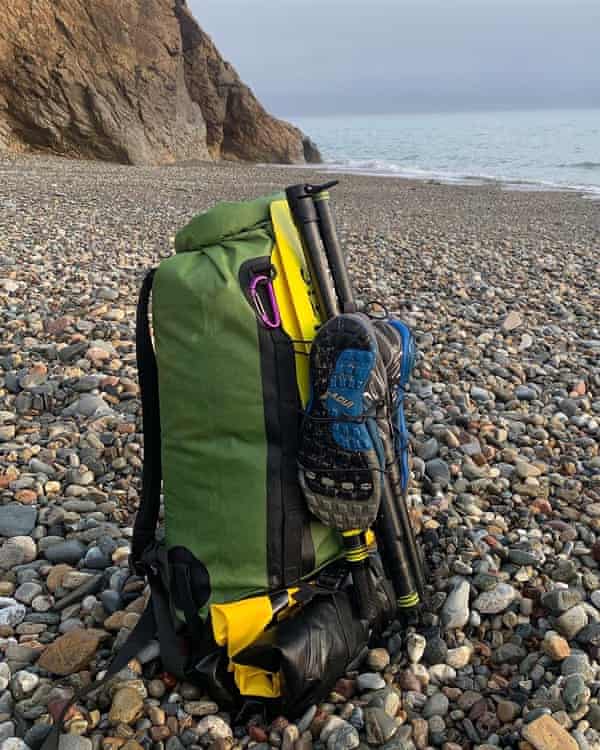
Jason is unconvinced. An engineer with a mountain rescue background, he has seen how the new hybrid sports draw people from different disciplines. “If you come to packrafting from a whitewater kayaking background, like I did, the water dangers are well understood. If you don’t, you can run into difficulties pretty easily.”
We hike down to the Afon Glaslyn, the river’s improbable blue colour arising from the stones beneath. Now we swap rafts. Jason will take the Anfibio Delta MX, I’m going to try the American-made Kokopelli Rogue, while Marianne sticks with the Anfibio Alpha. The river is low and I’m trying hard not to snag and puncture mine. Jason is expertly negotiating the rocks while explaining one potential hazard of a kit-heavy hybrid sport. “If you’ve got a lot of valuable equipment and you get into difficulties, you can get into a monkey fist trap.”
I scrape over a boulder while a low-hanging branch removes my hat. A monkey fist trap sounds bad but I have no idea what it is. Jason explains: “The monkey fist trap is a coconut shell with a hole in it, just large enough for a monkey to slip a hand through and grab some rice. But then the monkey’s fist holding the rice is too large to get out the trap – unless it drops the rice, which it will not.”
I remember all the times I have risked my life to save a bit of equipment – and we’re not talking £1,000 bikes. I’ve scrambled down cliff faces to retrieve a lens cap. I am a monkey fist trap nightmare. My bike had best stay on land.
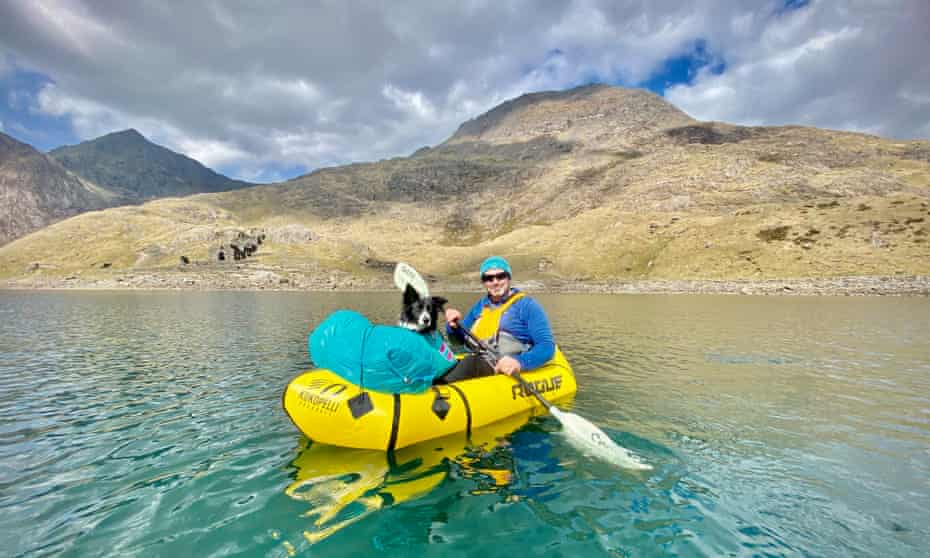
The hiking and rafting combo, however, seems to make sense as we descend Snowdon. I like the change in tempo between walking and paddling. “It also makes some journeys much easier,” says Jason. “Estuaries become passable. In Scotland we hiked to the foot of Suilven in record time by paddling across two lochs.”
We slip quietly across the lake and I am already wondering about other possibilities. Packraft sailing?
“There are sails made specifically for packrafts …” says Jason. He sounds doubtful.
“Another monkey fist problem?”
He grins. “Not really: it’s just that an umbrella is actually simpler and better.”
That’s a timely reminder: it’s not about shopping, but solving practical challenges. And the solutions can be simple, sometimes homespun. The spirit of all these sports, I reckon, is a little bit William Heath Robinson, a man who knew all about the many uses of an umbrella.
Other new hybrid sports
Kayak fishing

Inuit hunters will be surprised to hear that kayak fishing is considered a new sport, but it definitely is to me. The technological advances have come with sit-on craft that are broad enough to offer a stable platform, with rod holders and even pedal power, so you don’t have to use your hands for paddling. On top of that come GPS wayfinders and fishfinders, although I’m not going to bother with those – I want to catch a fish, not take home a freezerful. Also, I want to learn to read the water, not be staring at yet another tiny screen. I purchase a Feel Free Moken 12 fishing kayak from Manchester Canoes, where Duncan proves a useful source of information, adding as I leave: “Remember: if you don’t get wet, you’re not learning.”
The prospect of going out to sea without a guide focuses my attention. I check tides and wind strength and direction. “The sit-on kayaks are slow,” Duncan had warned. “You’re not going to be able to paddle against anything stronger than a breeze, or a decent tidal current.”
When I get down to the Ceredigion coast, I find the wind is whipping in hard. I get the boat out through the surf but I haven’t dared add a fishing rod – partly because I’ve forgotten to bring any means of lashing it to the hull. If it goes overboard, it will be lost. When I get back, I feel I have learned a lot, without even casting a line. I did a kayak trip on the sea alone. My first fishing expedition, however, still awaits.
Rock-climbing, hiking and camping

The idea that you might walk, climb and camp is an old one. In 1760 the Genevan naturalist Horace Bénédict de Saussure started attempting such journeys, eventually reaching the summit of Mont Blanc (27 years later) and in the process inventing alpinism. In those days of canvas tents, hemp ropes and hobnail boots, you required the strength of Hercules, or an army of porters. No more. Dan Pearson from specialist retailer Ultralight Outdoor Gear tells me about Cuben, a composite fibre originally made for racing sails in the 1992 America’s Cup. “It is 15 times stronger than steel,” he tells me. “Manufacturers quickly realised it could be woven into straps, guy ropes and ripstop fabrics, making them lighter and tougher.”
The result is that a two-person tent such as the Tigerwall from Colorado-based outfit Big Agnes weighs just 656g. Even four-season shelters like Terra Nova’s Laser series and MSR’s Carbon Reflex can come in well under two kilos, though not under £500.
There are also lightweight rucksacks, cookers, utensils and sleeping bags. Even clothes have lost weight and become cheaper: companies including Patagonia and Rab are making lightweight gear that is also environment-friendly. Boots like Inov-8’s Roclite series use a new material, graphene, to make featherlight grippy soles.
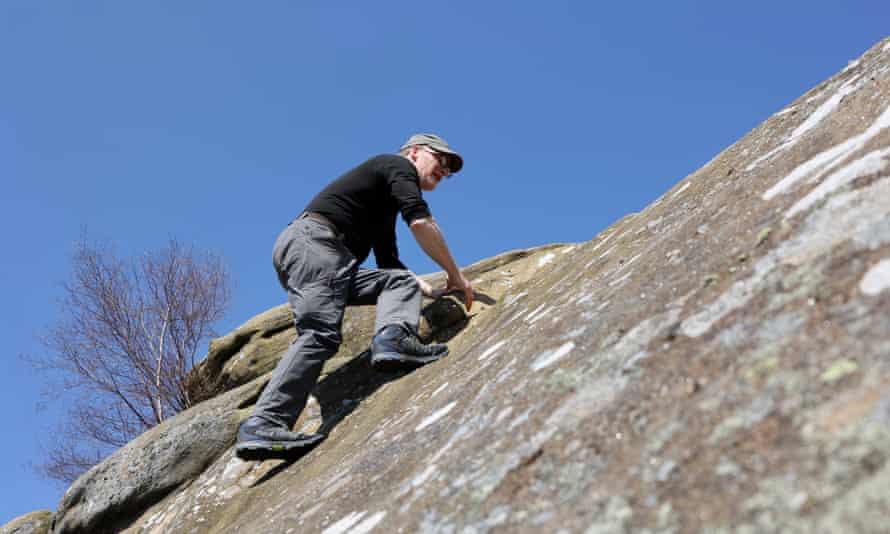
The lightening up of outdoor gear has caused a revolution in accessibility. Dan tells me that on the 2019 coast-to-coast challenge in Scotland, a gruelling self-supported backpacking event that he took part in, an 89-year-old woman was accompanied by her 91-year-old husband. “They were fit and tough, but realistically their participation was only possible with ultra-lightweight gear.”
Suitably inspired, my son Niall and I load up and set off walking along the Nidderdale Way in North Yorkshire, eventually reaching Brimham Rocks near Pately Bridge, a superb spot for a picnic and a climb on gritstone. In the end, after yomping all the gear in, we did use the cooker, but never got the climbing gear out: there was just too much enjoyable scrambling and exploring to be done. Many such places are now being linked on Strava, enabling a type of competitive orienteering to emerge – another dimension to Monsieur de Saussure’s invention.
SUP hiking
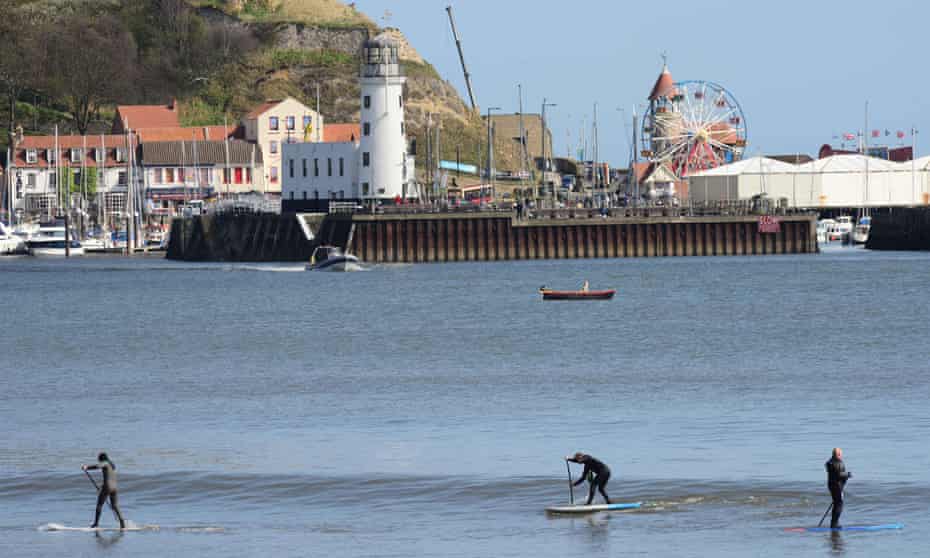
More than a decade ago I went to Scarborough’s South Bay to have a go at paddleboarding. We had fun, but I fully expected the sport to go the way of horseback cricket and ski ballet. So much for my fortune-telling skills: standup paddleboarding (SUP), a hybrid of surfing and kayaking, has proved hugely popular and enduring. Now the packable and inflatable SUP is weighing in at around eight kilos, so I’d say that makes SUP hiking possible as long as the hikes are not too long. In Idaho I saw SUPs with camping gear on board travelling long distances by water; in South Africa I’ve seen how paddleboarders stand clear of any shark activity and get to watch dolphin pods in the swells; and yoga and fitness classes have taken to using them, too. The pace of innovation is not slowing: manufacturer RED has a windsurfer SUP (and a backpack version). Electric-powered variants are on the market while a solar-powered SUP has been built. The future is going to be interesting.
Cross-country swimming
Interest in wild swimming is huge now, thanks partly to books like Wild Swimming, but mixing it with hiking or running in Britain always meant a problem: the cold wet water followed by the cold wet gear followed by hypothermia. New developments are helping, however: for example, Ruckraft makes a raft that bobs along behind you in the water, keeping your kit dry – much easier than towing a normal dry bag. Wetsuits have also moved on, with neoprene panels of different thickness and super-smooth surfaces. Now Alpkit is releasing a wetsuit that is actually designed for running in: the Duel weighs around 600g and is scheduled for release in mid-May.
Bikepacking
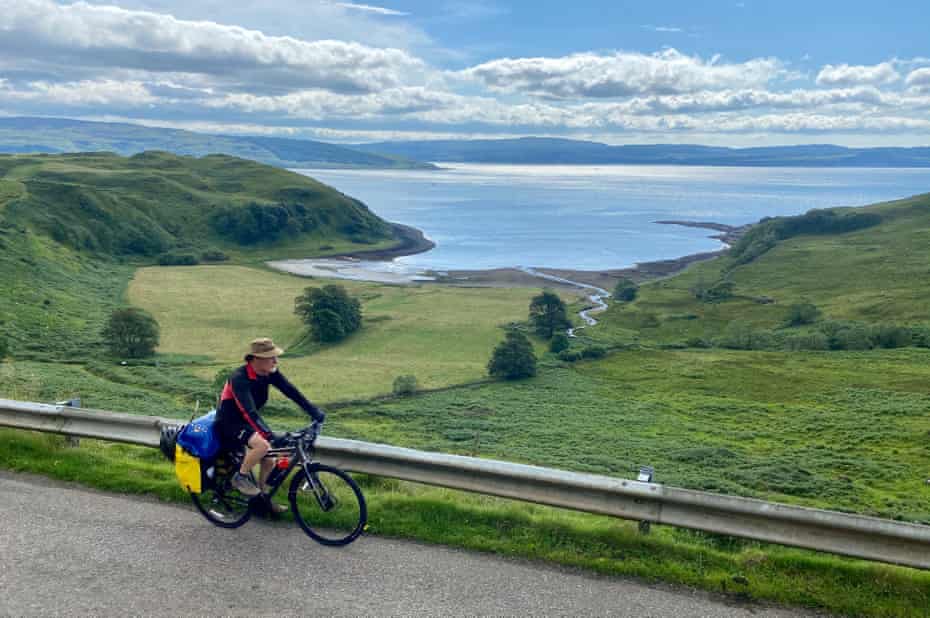
I’ve been strapping tents on the back of bikes for many years, but now we have a name for it: bikepacking. This is actually important because manufacturers have recognised that this is an outdoor sport worth designing for. Big Agnes and Vango have both started making lightweight tents that work for cyclists (shorter poles, or none at all, well-considered storage space, straps for placing the tent on your handlebars etc). Alpkit has a useful page on choose the right bike. My own experience says this is a sport where you don’t need to go shopping-crazy. Most of all, don’t buy big panniers. You will only fill them and regret it later: perhaps on the A859 between Luskentyre and Tarbert during a downpour, but possibly elsewhere, too. Mind you, I only have myself to blame: I had previously turned down the offer of that other useful hybrid, the electric bike.





